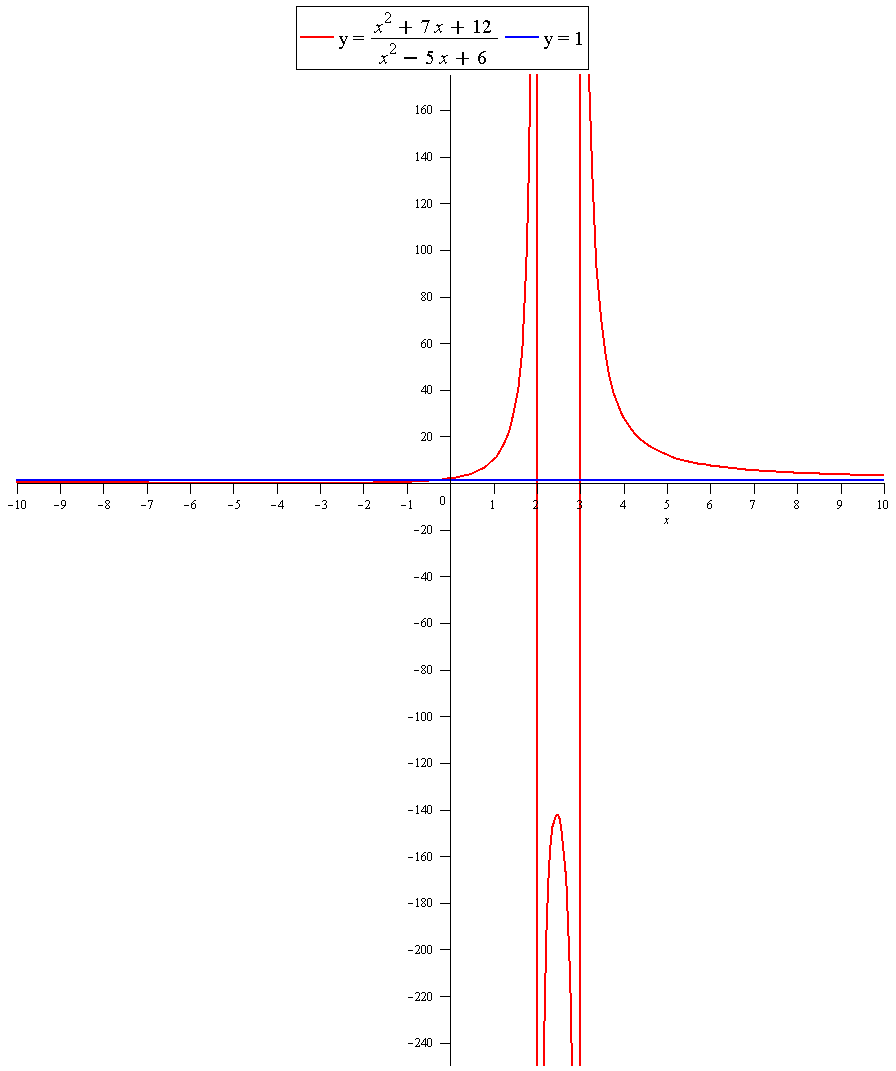Question #004c3
2 Answers
Nov 9, 2017
vertical; at
Explanation:
therefore, asymptotes are at
(the orange and green lines are
Nov 9, 2017
See below.
Explanation:
The function will have a vertical asymptotes where it is undefined. So for the denominator equalling zero, we have:
Factoring:
The lines
For end behaviour, we have:
so
So the line
Graph:



